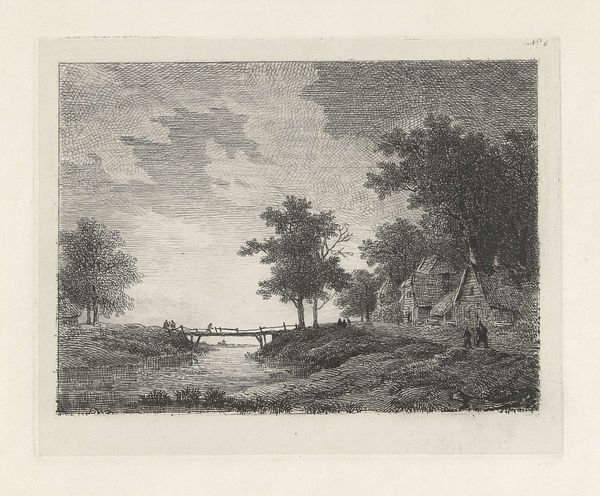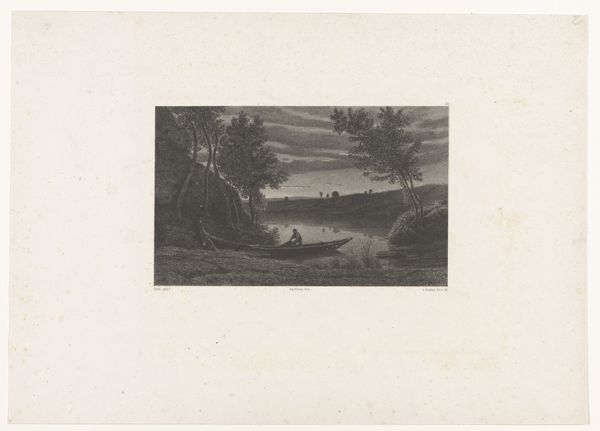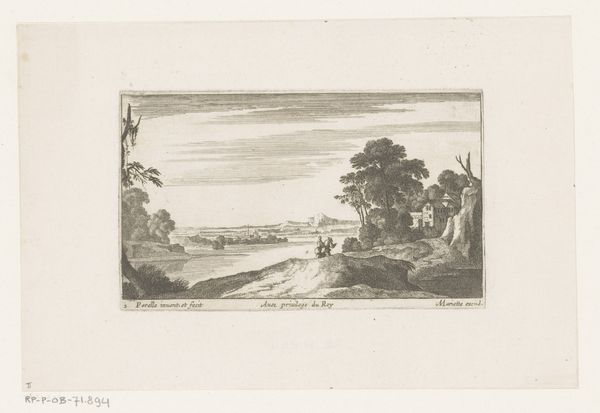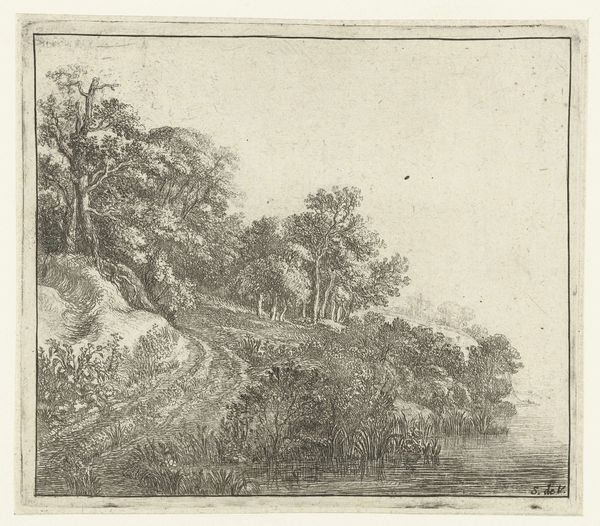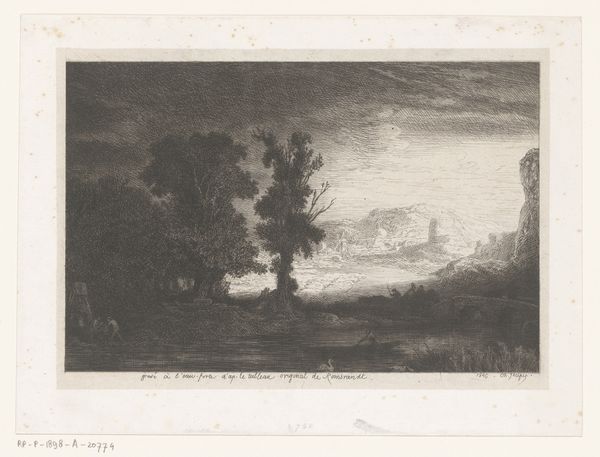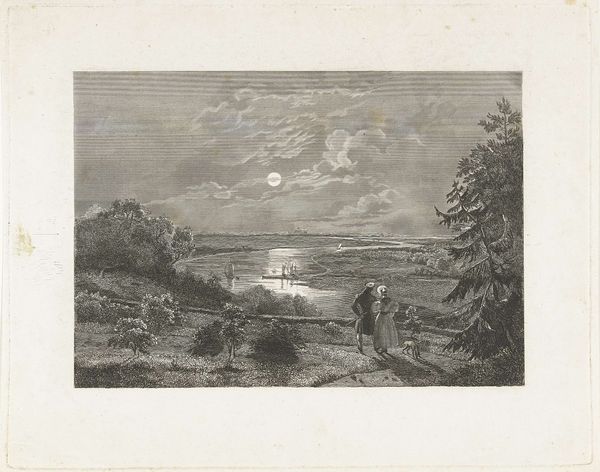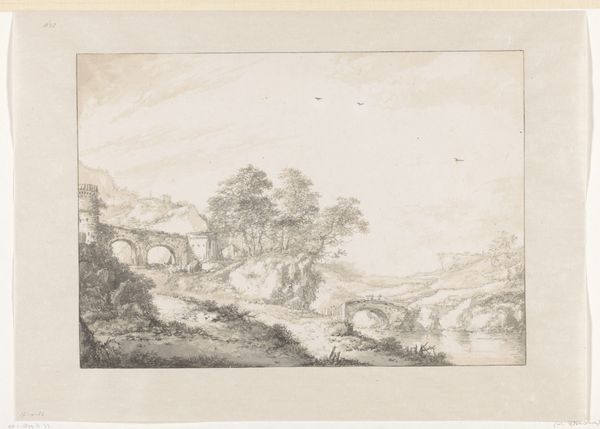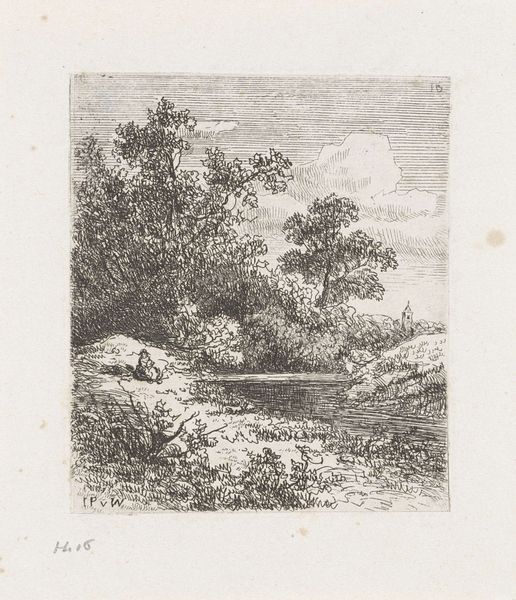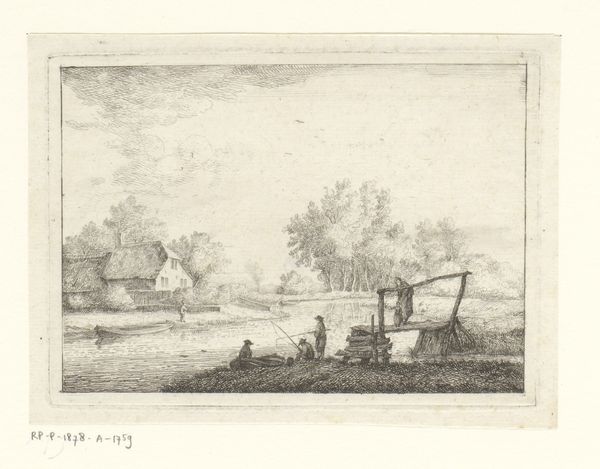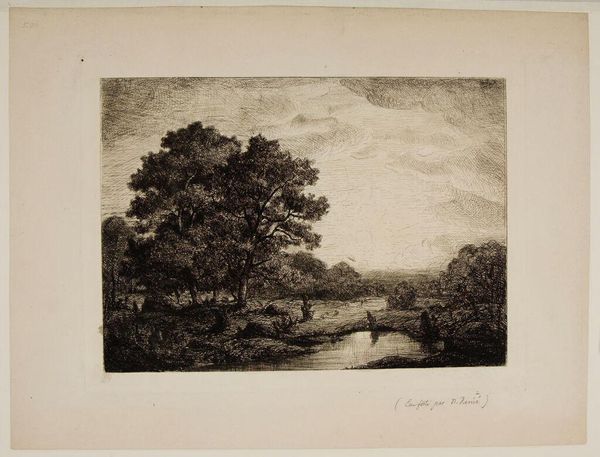
drawing, watercolor, ink
#
drawing
#
landscape
#
river
#
watercolor
#
ink
#
romanticism
#
cityscape
#
watercolor
Dimensions: height 85 mm, width 110 mm
Copyright: Rijks Museum: Open Domain
Curator: This lovely drawing, "De Donau bij Linz," or "The Danube at Linz," was created around 1800 by Ernst Willem Jan Bagelaar. It’s ink and watercolor on paper. What’s your immediate take? Editor: Starkly romantic. It's washed in greys, creams, almost melancholy tones, like a faded memory of a once vibrant world. It speaks of quietude, the gentle passage of time... even the romanticism feels tinged with a hint of inevitable decay. Curator: Decay, huh? That's heavier than I anticipated. I read the softness differently, as something tender, a reverie maybe. The clouds seem so gentle above those somewhat foreboding cliffs. Editor: And aren't the cliffs themselves significant? Their stoic, looming presence practically dwarfs that little cityscape barely visible on the right. It feels symbolic, like the indifferent hand of nature overlooking the fleeting endeavors of humankind. It's about power dynamics, permanence versus transience. Curator: Well, the Danube itself has quite a story too, symbolically! Think of all the trade, travel, conquest… this drawing is, on one level, capturing that very historically pregnant waterway in a very still moment. Perhaps it's Bagelaar wanting to capture something immense, historically and geographically, on a small piece of paper. Editor: Exactly! The Danube as artery of Europe! Bagelaar isn't just painting pretty scenery. He's subtly layering this very personal snapshot with those larger narratives, embedding a sense of historical weight within that gentle wash of color. Look at how small the people atop the cliffs are! They seem insignificant. This adds scale but also is full of implied meaning. Curator: It is pretty affecting to imagine the view of Linz hadn't changed much for centuries, and that Bagelaar himself was experiencing something his predecessors might have felt as well, standing in the same spot, contemplating that magnificent river. Editor: Leaving us now with not only the visual record, but also that shared experience echoed across centuries. This image, initially simple, reveals how landscapes hold time itself.
Comments
No comments
Be the first to comment and join the conversation on the ultimate creative platform.
